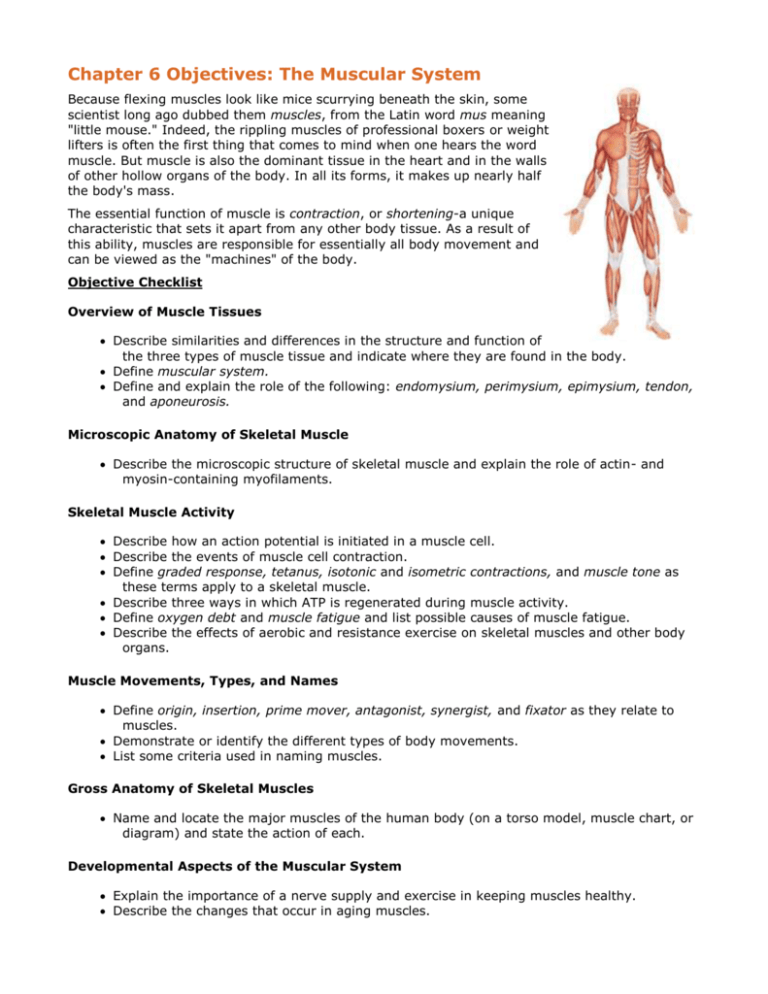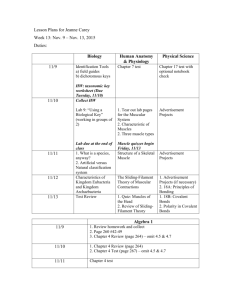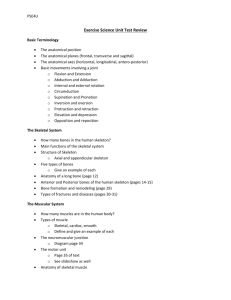Chapter 6 Objectives: The Muscular System
advertisement

Chapter 6 Objectives: The Muscular System Because flexing muscles look like mice scurrying beneath the skin, some scientist long ago dubbed them muscles, from the Latin word mus meaning "little mouse." Indeed, the rippling muscles of professional boxers or weight lifters is often the first thing that comes to mind when one hears the word muscle. But muscle is also the dominant tissue in the heart and in the walls of other hollow organs of the body. In all its forms, it makes up nearly half the body's mass. The essential function of muscle is contraction, or shortening-a unique characteristic that sets it apart from any other body tissue. As a result of this ability, muscles are responsible for essentially all body movement and can be viewed as the "machines" of the body. Objective Checklist Overview of Muscle Tissues Describe similarities and differences in the structure and function of the three types of muscle tissue and indicate where they are found in the body. Define muscular system. Define and explain the role of the following: endomysium, perimysium, epimysium, tendon, and aponeurosis. Microscopic Anatomy of Skeletal Muscle Describe the microscopic structure of skeletal muscle and explain the role of actin- and myosin-containing myofilaments. Skeletal Muscle Activity Describe how an action potential is initiated in a muscle cell. Describe the events of muscle cell contraction. Define graded response, tetanus, isotonic and isometric contractions, and muscle tone as these terms apply to a skeletal muscle. Describe three ways in which ATP is regenerated during muscle activity. Define oxygen debt and muscle fatigue and list possible causes of muscle fatigue. Describe the effects of aerobic and resistance exercise on skeletal muscles and other body organs. Muscle Movements, Types, and Names Define origin, insertion, prime mover, antagonist, synergist, and fixator as they relate to muscles. Demonstrate or identify the different types of body movements. List some criteria used in naming muscles. Gross Anatomy of Skeletal Muscles Name and locate the major muscles of the human body (on a torso model, muscle chart, or diagram) and state the action of each. Developmental Aspects of the Muscular System Explain the importance of a nerve supply and exercise in keeping muscles healthy. Describe the changes that occur in aging muscles.









